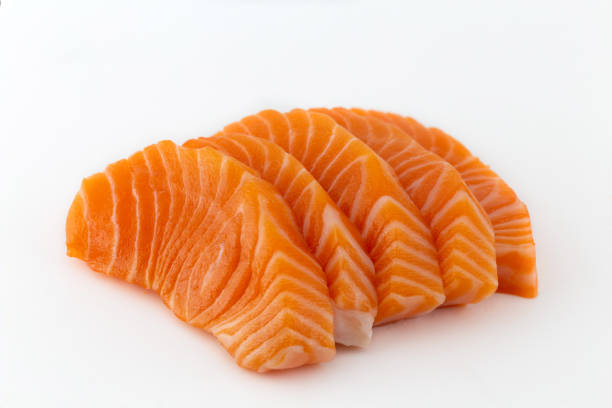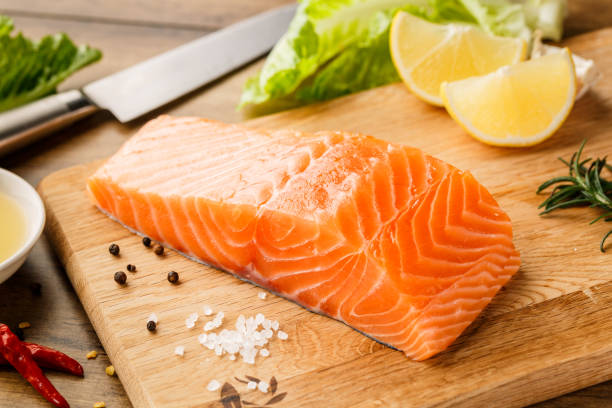Salmon is a type of fish that is packed with nutrients and is considered a healthy food choice by many nutrition experts. It is an excellent source of protein, omega-3 fatty acids, and various vitamins and minerals. Additionally, salmon is low in calories and is a great option for individuals looking to maintain a healthy weight or lose weight.
One of the most important things to consider when it comes to counting calories is portion size. The amount of calories in salmon can vary greatly depending on the serving size. A 3-ounce serving of cooked salmon contains approximately 140 to 170 calories. This serving size is equivalent to about the size of a deck of cards.
Calories in salmon
Salmon is a popular fish known for its rich taste and numerous health benefits. It is a great source of protein, omega-3 fatty acids, vitamins, and minerals. The calorie content of salmon varies based on the type, cooking method, and serving size. In this article, we will explore how many calories are in salmon and its nutritional benefits.
Types of Salmon
There are several types of salmon, each with its own calorie content. The most commonly consumed types of salmon are Atlantic salmon, Sockeye salmon, Coho salmon, and Pink salmon. The calorie content of these types of salmon ranges from 140 to 200 calories per 100 grams.
Atlantic salmon is the most popular type of salmon, and it has the highest calorie content, with about 200 calories per 100 grams. This type of salmon is usually farmed and has a mild, sweet flavor.
Sockeye salmon has a rich, reddish-orange color and a strong, slightly smoky flavor. It contains about 160 calories per 100 grams.
Coho salmon is a type of salmon that has a lighter flavor and a softer texture than Atlantic salmon. It contains about 140 calories per 100 grams.
Pink salmon is the most common type of salmon, and it is the least expensive. It has a mild flavor and a soft texture. It contains about 140 calories per 100 grams.
Cooking Methods
The cooking method used to prepare salmon also affects its calorie content. Grilling or broiling salmon is a healthy cooking method that adds minimal calories to the fish. Baking salmon in the oven is also a healthy option that adds minimal calories.
Frying salmon, on the other hand, adds a significant amount of calories to the fish, as the oil used in frying can add up to 200 calories or more to a serving of salmon. Poaching salmon is another healthy cooking method that adds minimal calories.
Serving Size
The serving size of salmon also affects its calorie content. A 3-ounce serving of salmon contains about 140 to 200 calories, depending on the type of salmon and cooking method. A 6-ounce serving of salmon contains about 280 to 400 calories.
Nutritional Benefits of Salmon
Salmon is a rich source of protein, with about 20 to 25 grams of protein per 3-ounce serving. It is also a good source of omega-3 fatty acids, which have been shown to have numerous health benefits, including reducing the risk of heart disease, improving brain function, and reducing inflammation.
Salmon is also a good source of vitamins B12 and D, as well as minerals such as potassium and selenium. Vitamin B12 is essential for maintaining healthy nerve cells and red blood cells, while vitamin D helps the body absorb calcium for strong bones.
In addition to its numerous health benefits, salmon is also low in calories, making it a great option for those who are watching their calorie intake.
Conclusion
In addition to protein and omega-3 fatty acids, salmon is also a good source of various vitamins and minerals, including vitamin B12, vitamin D, and potassium. Vitamin B12 is essential for maintaining healthy nerve function and red blood cells, while vitamin D is important for bone health and calcium absorption. Potassium helps regulate blood pressure and supports overall heart health.
In conclusion, the calorie content of salmon varies based on the type, cooking method, and serving size. A 3-ounce serving of salmon contains about 140 to 200 calories, and a 6-ounce serving contains about 280 to 400 calories. Salmon is a rich source of protein, omega-3 fatty acids, vitamins, and minerals, and is also low in calories. Whether you are looking to improve your overall health, reduce your calorie intake, or simply enjoy a delicious and nutritious meal, salmon is a great option to consider.

 Home
Home Health
Health Diet & Nutrition
Diet & Nutrition Living Well
Living Well More
More












